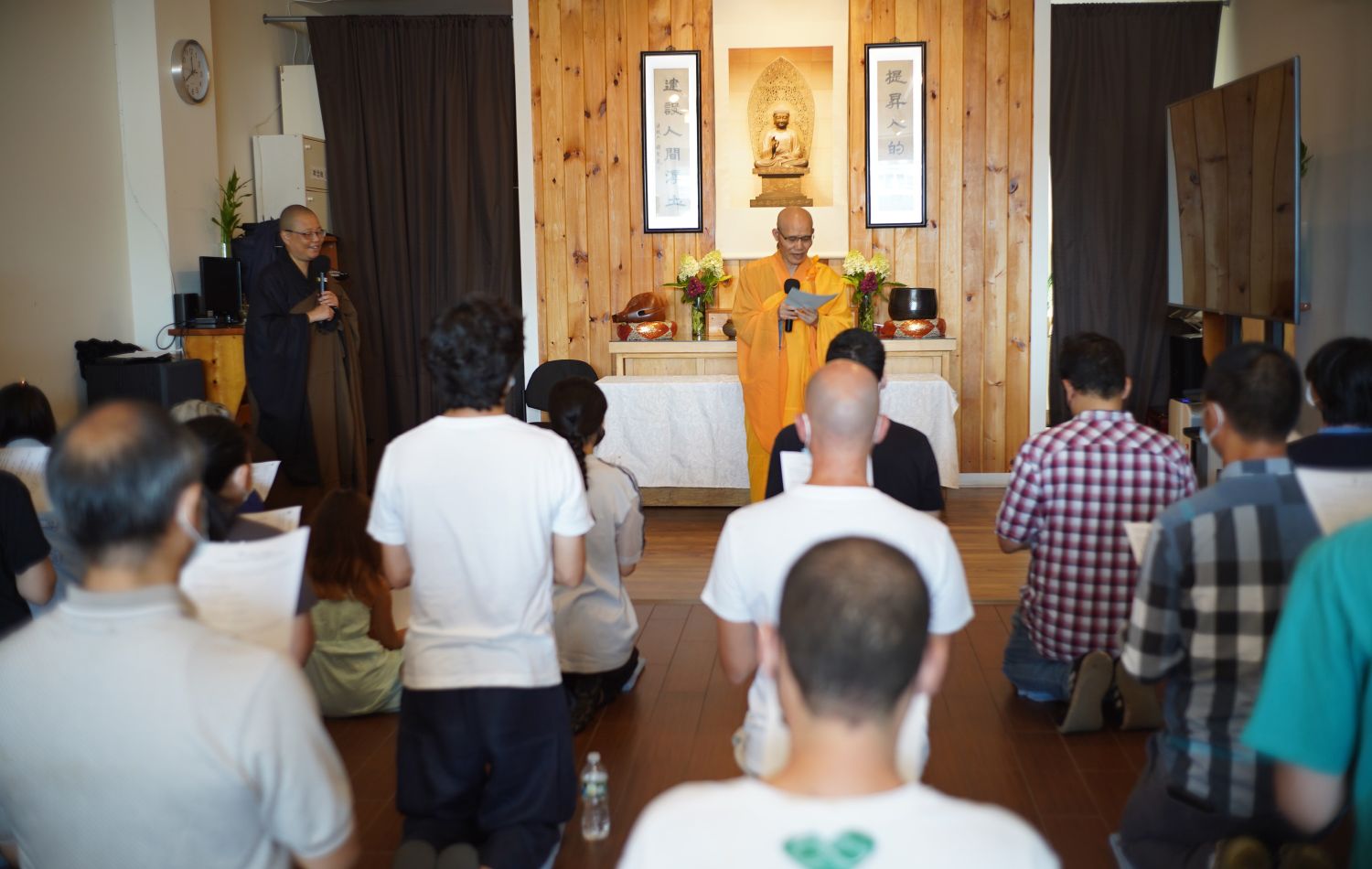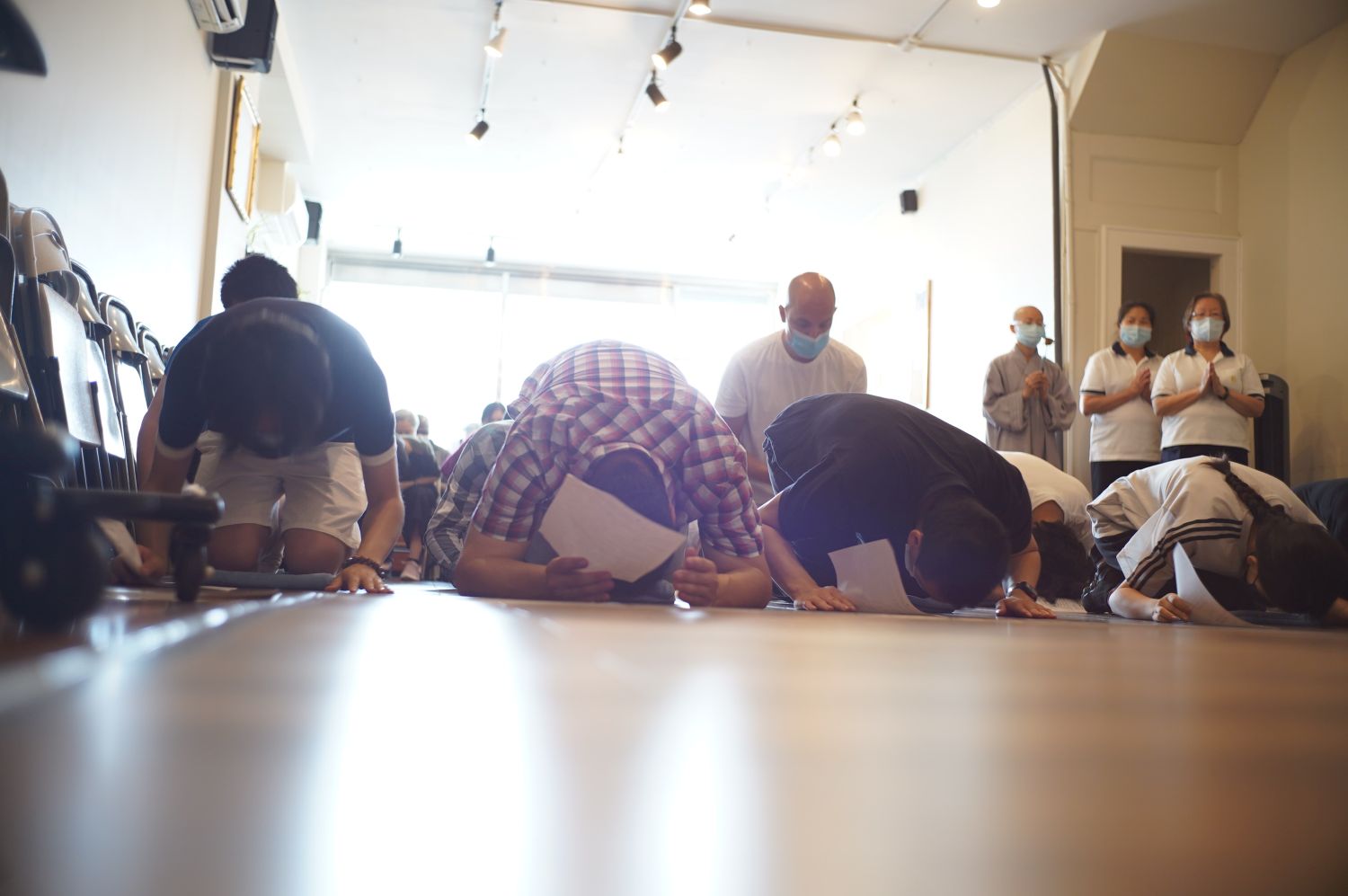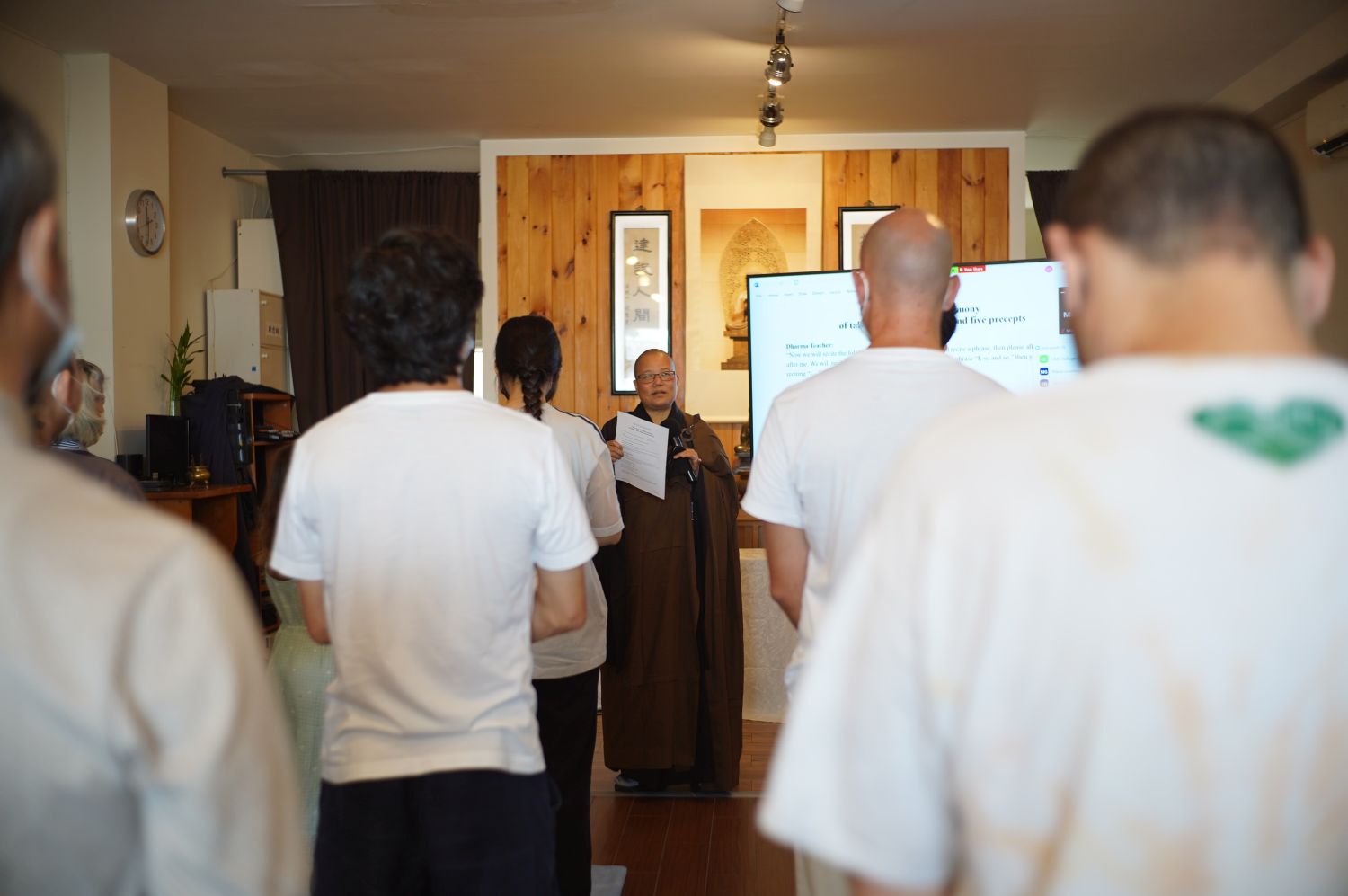DDM Global News
Chan Meditation Center Organizes Prayer & Refuge-Taking Ceremony: Guiding Followers Home from Within
Updated August 12, 2022
At 11 a.m. EST on July 31, Dharma Drum Mountain's Chan Meditation Center in New York held an in-person and virtual Prayer and Refuge-Taking ceremony. Ven. Guo Xing, DDM's Vice Abbot President and Chan Hall master, presided over the transmission of the Three Refuges and Five Precepts for the 16 in-person participants and three remote devotees.
Ven. Chang Hwa, director of CMC and master of the ceremony, first gave an explanation in Mandarin and English on the meaning and essence of taking the Three Refuges, as well as the definitions of the five precepts (not taking lives, not taking what is not given, not engaging in sexual misconduct, not telling lies, and not using alcohol and drugs) and how properly uphold them.
During the ceremony, participants, kneeling before the Buddha statue with joined palms and following the venerable's guidance, recited their refuge vows, received the five precepts, and formally became Buddhists. Having taken the four great vows—
vowing to deliver innumerable sentient beings; vowing to cut off endless afflictions; vowing to master limitless approaches to the Dharma; and vowing to attain supreme Buddhahood—they aspired to continually practice the Buddha's teaching and support the Three Jewels, without retrogressing in their faith.
 Meanwhile, over a dozen devotees and volunteers witnessing the ceremony at the Center also joined the chanting of the refuge-taking ritual, enhancing the group's faith in the Three Jewels and their determination to embark on the Buddha path. By chanting "Namo Guanyin (Avalokitesvara) Bodhisattva" together, people prayed for blessings for the world. Ven. Guo Xing then presented each newly converted Buddhist a Buddha amulet and a string of Buddhist beads.
Meanwhile, over a dozen devotees and volunteers witnessing the ceremony at the Center also joined the chanting of the refuge-taking ritual, enhancing the group's faith in the Three Jewels and their determination to embark on the Buddha path. By chanting "Namo Guanyin (Avalokitesvara) Bodhisattva" together, people prayed for blessings for the world. Ven. Guo Xing then presented each newly converted Buddhist a Buddha amulet and a string of Buddhist beads.As Ven. Guo Xing mentioned in his Dharma talk, "taking the refuge in the Buddha" is normally interpreted as taking refuge in Shakyamuni Buddha, but or, more significantly, seeking refuge in our own Buddha nature. To perform the refuge-taking ritual before the Buddha statue is to make use of something external in order to help us develop our intrinsic compassion and wisdom. If we can really benefit from the Buddha-dharma, we will find the motivation to continue with our practice. Therefore, the venerable encouraged everyone to go step by step in our practice, to explore the treasure of our true nature. In addition, he wished all participants to grow in compassion and wisdom.
 On the other hand, as Ven. Chang Hwa explained, Buddhists take refuge in the Three Jewels—the Buddha, the Dharma, and the Sangha—rather than in some specific organization or individual. After taking the refuge, we're free to seek out a suitable teacher and follow their guidance for our Dharma practice. The five precepts are fundamentals for all Buddhist precepts, which Buddhists should abide by as an essential principle. The venerable encouraged everyone to take all of the five precepts, visit Dharma centers, and participate in group practice activities frequently. Taking the refuge resembles enrolling in a school as a new student, for a fresh start in life.
On the other hand, as Ven. Chang Hwa explained, Buddhists take refuge in the Three Jewels—the Buddha, the Dharma, and the Sangha—rather than in some specific organization or individual. After taking the refuge, we're free to seek out a suitable teacher and follow their guidance for our Dharma practice. The five precepts are fundamentals for all Buddhist precepts, which Buddhists should abide by as an essential principle. The venerable encouraged everyone to take all of the five precepts, visit Dharma centers, and participate in group practice activities frequently. Taking the refuge resembles enrolling in a school as a new student, for a fresh start in life.This Prayer and Refuge-Taking ceremony was the first event in North America organized by CMC since the outbreak of the COVID-19 pandemic. Participants were mostly young followers-- the youngest being only seven years old-- who had actually participated in several of the events at CMC accompanied by her parents, and had thereby already formed a karmic affinity with the Three Jewels. Remote participants included devotees from as far as Spain and Russia. Thanks to the Internet, they were able to transcend the boundaries of space and time to join this significant event.
From 1 to 3 pm, the monastics and volunteers of CMC prepared delicate snacks for all the visitors. During tea-time, while sitting in circles at its Buddha Hall, participants took advantage of this rare opportunity to seek advice from the monastics on the methods of practice. This was indeed a precious cause and condition to be close to the Three Jewels and learn the Buddha's teachings, thereby growing in wisdom and eliminating afflictions.
Text: Heng Yang (楊恆)
Photos: Yin Ting
Translation: Cheng-yu Chang (張振郁)
Editing: Chia-cheng Chang (張家誠), Keith Brown
Translation: Cheng-yu Chang (張振郁)
Editing: Chia-cheng Chang (張家誠), Keith Brown
